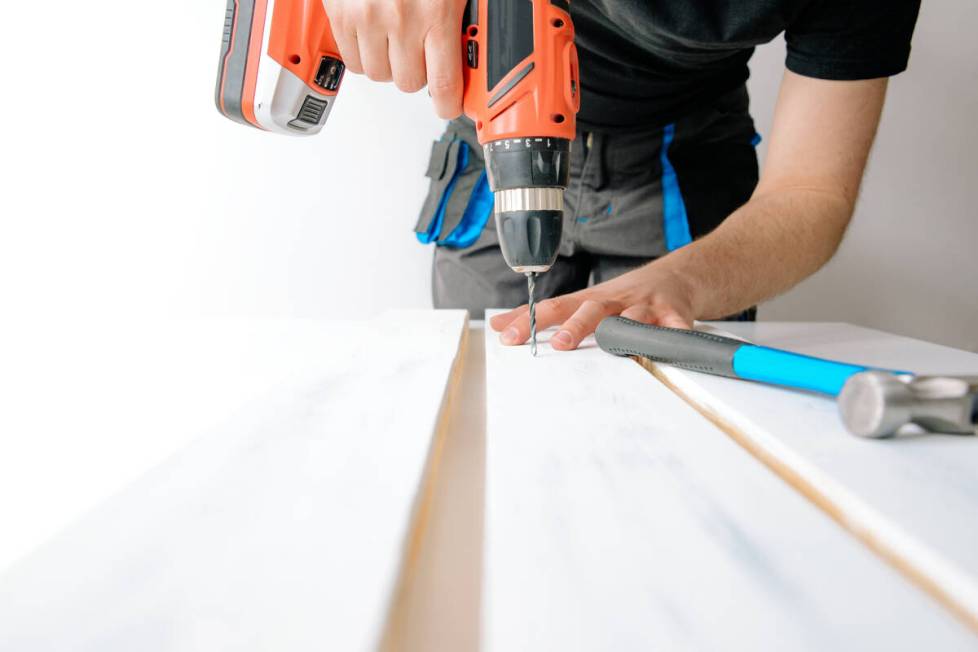Predrill hole to prevent split wood

Q: I was installing some cabinets and trying to screw the two frames together. I didn’t have much luck, as the first time I attempted this I twisted the screw head right off of the screw. Luckily, I was able to wrench it out. The next time, I almost got the screw all the way in but heard a loud crack. I reversed the screw and noticed that the wood had cracked. What am I doing wrong?
A: It sounds as if you have not predrilled the holes, and you possibly are not using the right screws.
When you screw together two pieces of hardwood, you need to predrill the hole. This allows the shaft of the screw to enter the hole without splitting the surrounding wood and allows the threads to cut into the sides of the hole. Soft wood will compress, but hardwood won’t; it splits.
The diameter of the hole you drill depends on the size of the screw. I usually hold up the screw and look at the shaft (the diameter excluding the threads). I will then find a drill bit that is the same diameter or slightly less before I drill the hole.
Before you predrill, clamp the pieces together and make sure the bit is sharp. The spiraling action of the drill bit should remove the wood shavings as the bit cuts, but you should pull the bit out of the hole regularly to clear it. You will find that with hardwood especially, the shavings will compact, and friction will cause it to smoke.
The other possible problem is your choice of screws. For cabinets, you should be using wood cabinet screws. The manufacturer may have supplied you with the proper screws or at least listed the proper kind.
Different screws are made for different jobs. Ones with larger heads apply more bearing pressure against the surface to which they are attached. This is especially true when a washer is placed under the head. Also, with a larger bearing area, there is less chance the material will pull out from the screw.
A machine screw has finer threads than a wood screw and is made to mate with a nut or a tapped hole. A sheet metal screw is a stubby screw but has coarse threads, and a self-tapping screw drills its own hole as it goes into the material.
A drywall screw is typically a universal screw. They are sharp, come in coarse or fine threads and can make quick work of a project. However, this screw is brittle and has poor shear strength. It can snap or shear with moderate stress so you surely do not want to use these for cabinets.
When screwing two surfaces together, another trick is to use a bar of soap. Rub the threads of the screw on the bar so there are flakes of the soap all over the screw threads. You also can wrap the screw threads with Teflon tape. Either one of these act as a lubricant to make the screw sink into the hole like a hot knife through butter.
Mike Klimek is a licensed contractor and owner of Las Vegas Handyman. Questions may be sent by email to handymanoflasvegas@msn.com. Or, mail to 4710 W. Dewey Drive, No. 100, Las Vegas, NV 89118. His web address is www.handymanoflasvegas.com.